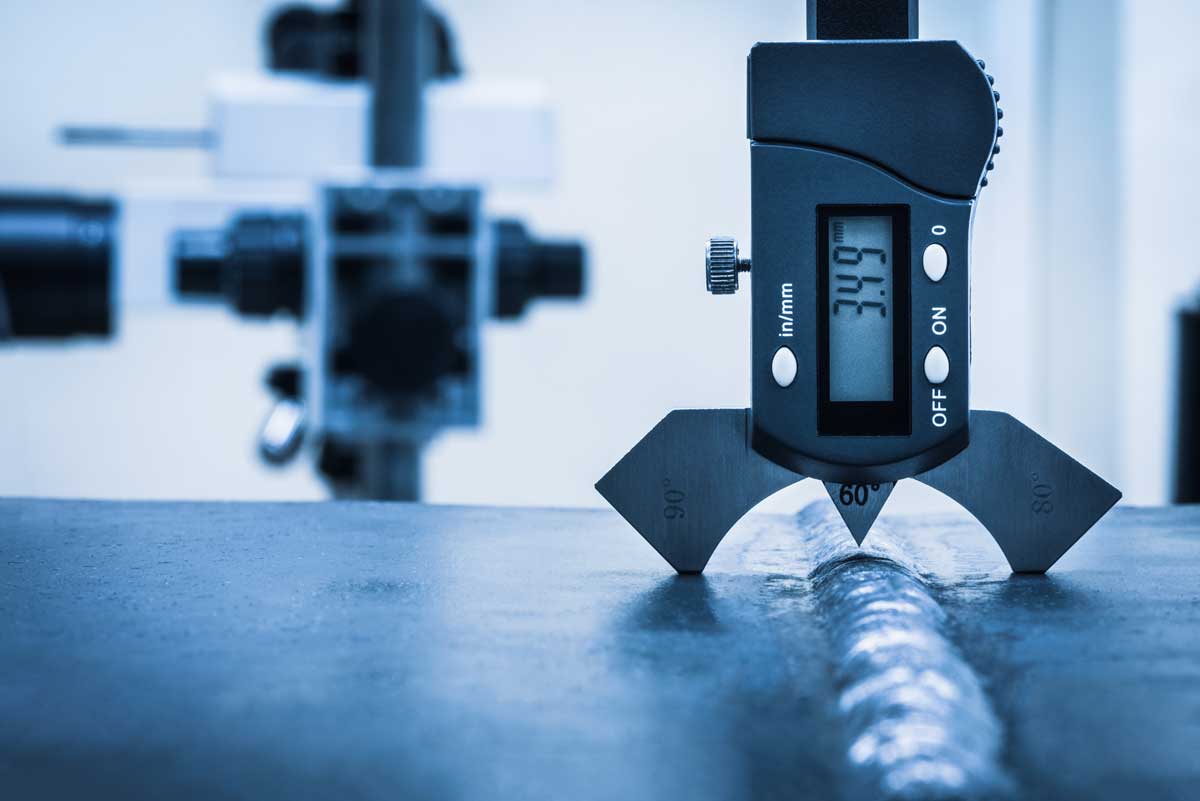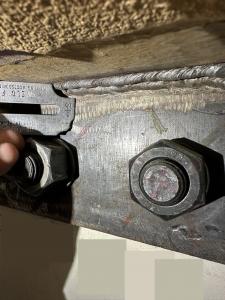Leading Advantages of Picking Welding Inspection Racine for Quality Assurance
Cutting-edge Methods to Fillet Weld Inspection and Testing: Enhancing Weld Quality and Compliance Specifications
In the realm of welding, the top quality and honesty of fillet welds play a crucial function in making sure the architectural stability and integrity of numerous industrial elements. With the consistent drive for improved performance and compliance with stringent standards, the expedition of cutting-edge strategies to fillet weld assessment and screening has actually ended up being vital. As industries progress, the standard methods may no more be adequate in meeting the demands of modern-day welding applications. By welcoming innovative modern technologies and methods, a brand-new horizon of possibilities arises in the world of weld high quality analysis and adherence to compliance criteria.
Advanced Non-Destructive Screening Approaches
Using state-of-the-art modern technologies, progressed non-destructive screening approaches play an essential function in making certain the honesty and high quality of fillet welds. These methods, such as phased range ultrasonic screening (PAUT) and magnetic bit screening (MPT), deal thorough understandings into the weld's internal framework without creating any type of damages to the material. PAUT, for circumstances, uses several ultrasonic components to check the weld from different angles, giving a thorough visualization of possible flaws like absence of fusion or fractures.
By employing these advanced non-destructive testing methods, weld assessors can accurately assess the high quality of fillet welds, making sure compliance with market standards and guidelines. The capacity to detect flaws early on not only enhances weld top quality however likewise protects against expensive rework or failures in structural integrity, underlining the value of these innovative screening techniques in welding evaluations.
Robotics and Automation in Evaluation
The integration of robotics and automation has reinvented the examination procedure for fillet welds, enhancing effectiveness and accuracy in quality analysis. Robotics provide precise control and repeatability in examining welds, ensuring trusted and regular results. Automated systems can be configured to follow certain examination courses, making sure comprehensive coverage of welds and reducing the danger of human error.
Robot assessment systems equipped with sophisticated sensors can detect and gauge weld attributes with high precision, giving detailed information for evaluation. These systems can recognize issues such as fractures, lack of blend, and porosity, allowing punctual restorative activities to be taken. Furthermore, robotics and automation permit real-time data collection and analysis, giving instant comments to drivers and facilitating quick decision-making processes.
Moreover, making use of robotics and automation in fillet weld inspection boosts general productivity by minimizing evaluation times and increasing inspection throughput. By streamlining the inspection procedure, manufacturers can make certain weld quality and conformity requirements are met effectively, eventually bring about set you back savings and improved product quality.
Making Use Of Expert System for Evaluation
Artificial knowledge plays a pivotal role in improving the efficiency and accuracy of evaluation in fillet weld inspection procedures. AI algorithms can rapidly process large quantities of information from weld examinations, identifying problems or variances that may be testing to identify with the naked eye - Welding Inspection Racine.
Moreover, AI systems can gain from past assessment information, constantly enhancing their ability to recognize possible flaws and deviations in fillet welds. This flexible knowing ability enhances the general quality assurance process, decreasing the probability of human mistake and making certain that welds fulfill the needed criteria. By integrating expert system into fillet weld evaluation, industries can attain greater degrees of effectiveness, uniformity, and conformity in their inspection practices.
Portable Equipment for On-Site Examination
 Enhancing area examination effectiveness, the fostering of mobile tools transforms on-site assessment procedures for fillet welds. These devices provide versatility and comfort, allowing examiners to carry out complete exams in different places, including remote or difficult settings. Mobile tools such as ultrasonic testing gadgets, magnetic fragment examination equipment, and digital radiography systems provide real-time information and high-resolution imaging capabilities, allowing quick decision-making and prompt responses on weld top quality.
Enhancing area examination effectiveness, the fostering of mobile tools transforms on-site assessment procedures for fillet welds. These devices provide versatility and comfort, allowing examiners to carry out complete exams in different places, including remote or difficult settings. Mobile tools such as ultrasonic testing gadgets, magnetic fragment examination equipment, and digital radiography systems provide real-time information and high-resolution imaging capabilities, allowing quick decision-making and prompt responses on weld top quality.One substantial advantage of portable tools is their capacity to simplify inspection procedures, decreasing downtime and improving overall efficiency. Assessors can easily transfer these tools to different task sites, getting rid of the demand for transporting hefty equipment or parts to off-site facilities. Additionally, the mobility of these devices advertises cost-effectiveness by lessening transport expenses and increasing examination timelines.
Furthermore, the use of mobile tools for on-site assessment promotes proactive high quality control procedures, as inspectors can promptly identify and address any kind of prospective welding problems or discrepancies. By incorporating these ingenious modern technologies into on-site evaluation practices, welding specialists can ensure compliance with industry requirements and boost weld high quality, ultimately leading to enhanced architectural stability and safety and security in different welding applications.
Combination of Data Administration Systems
Having enhanced on-site examination procedures via my sources the application of mobile devices, the following stage entails the smooth combination of information administration systems to even more enhance performance and data analysis capabilities in fillet weld inspection and testing. Welding Inspection Racine. By incorporating data administration systems into the inspection procedure, companies can simplify information collection, storage, and analysis. This combination enables real-time monitoring of weld high quality, prompt identification of defects, and prompt decision-making to rectify any kind of concerns that might develop throughout the evaluation procedure
The integration of data management systems makes it possible for seamless communication in between various stakeholders involved in the examination procedure, fostering cooperation and improving general top quality control measures. Ultimately, the assimilation of data administration systems serves to raise the standards of fillet weld evaluation and screening, guaranteeing conformity with industry laws and boosting weld top quality.
Final Thought
In conclusion, cutting-edge methods to fillet weld examination and screening have dramatically boosted weld quality and conformity requirements. Advanced non-destructive testing methods, robotics, automation, man-made knowledge, portable tools, and information management systems have actually changed the method weld examinations are performed. By making use of these innovations, sectors can make sure that welds meet the called for quality requirements and regulations, ultimately improving overall performance and safety in welding processes.

By using these sophisticated non-destructive screening techniques, weld examiners can precisely examine the top quality of fillet welds, guaranteeing conformity with market criteria and regulations. Mobile devices such as ultrasonic screening tools, magnetic fragment inspection tools, and electronic radiography systems offer real-time information and high-resolution imaging capacities, making it possible for fast decision-making and instant feedback on weld high quality.
Having optimized on-site examination processes with the application of portable devices, the next stage involves the smooth integration of data management systems to better improve effectiveness and information evaluation abilities in fillet weld examination and testing (Welding Inspection Racine). Inevitably, the assimilation continue reading this of information monitoring systems offers to raise the requirements of fillet weld inspection and testing, ensuring conformity with market guidelines and boosting weld Recommended Site quality
 In final thought, ingenious strategies to fillet weld assessment and screening have substantially enhanced weld quality and conformity standards.
In final thought, ingenious strategies to fillet weld assessment and screening have substantially enhanced weld quality and conformity standards.